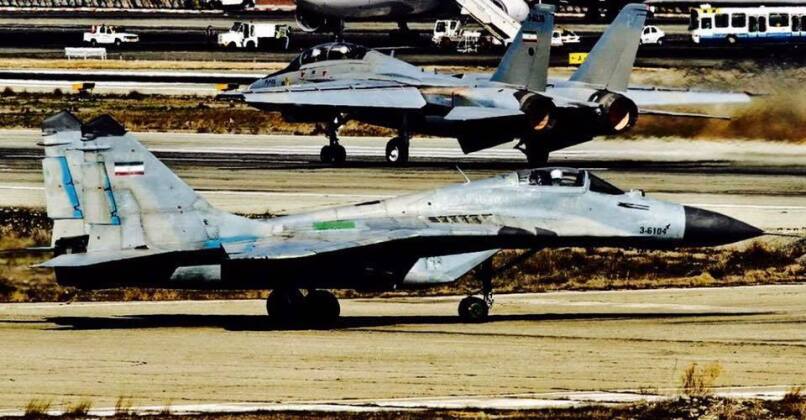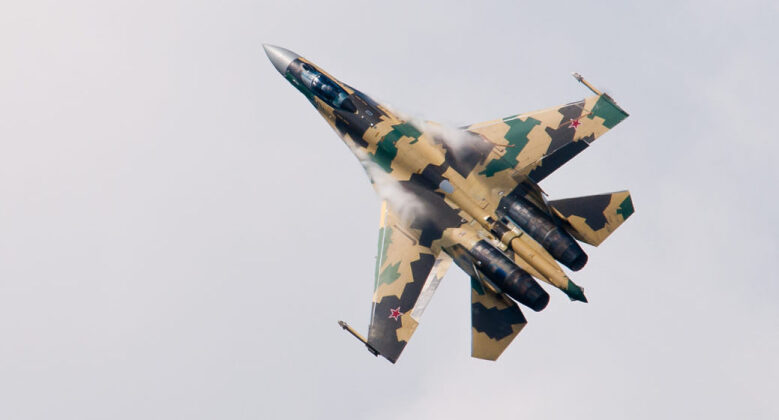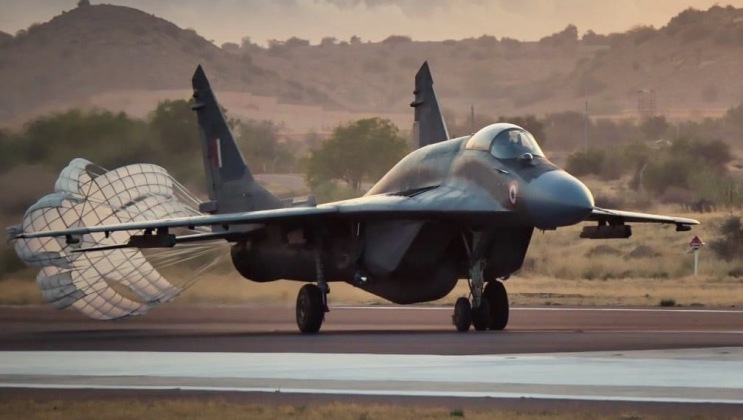News
Forget the Su-35: The Best Russian Fighter For Iran May Be a Derivative of the MiG-29UPG Designed for India

Following the announcement on September 4 by Commander of the Air Force of the Islamic Republic of Iran, General Hamid Vahedi, that acquisitions of Su-35S fighters from Russia were under consideration, the possible roles the aircraft could play in the service and the numbers it may be acquired in have been widely speculated. Iran has not acquired fighters from abroad since the 1990s, when it received two MiG-29 squadrons and a single Su-24M strike fighter unit ordered from the Soviet Union as well as older J-7 lightweight fighters from China, leaving its fleet almost entirely obsolete and comprised primarily of Vietnam War era American jets acquired in the 1970s. Although Iran operates 17 fighter squadrons only two of these can deploy active radar guided air to air missiles, namely two F-14 units acquired from 1975-79 which have been modernised domestically. No aircraft acquired from abroad had moved past mechanically scanned radars to deploy phased array radars.
While Iranian drones serving under the Revolutionary Guard Corps have frequently operated beyond the country’s airspace, including stealth designs that have penetrated Israeli airspace, the Iranian Air Force itself has not meaningfully operated abroad since the Iran-Iraq War of the 1980s. The only notable exception was the bombing of Islamic State insurgents in Iraq that were operating near Iranian territory in the 2010s. Integrating the Su-35, a heavyweight design and the most costly non-Western fighter ever exported, thus leaves it with no clear place in the fleet and no fighter which it could serve as a direct replacement for.
The Su-35s cost an estimated $1 billion for every twelve aircraft, although this can vary depending on how they are equipped or the scale on which they are acquired. While the fighters have gained considerable foreign interest, threats of Western economic warfare measures against any country that acquires them has deterred the large majority, while competition from the much cheaper but in most areas comparably capable Su-30SM, and from the higher end Su-57, have further restricted market share. Whether the Su-35 is the optimal choice for Iran remains in serious question, with the aircraft having many notable strengths but also significant shortcomings. A major benefit of acquiring the fighter is that they can likely be delivered very quickly, with Russia expected to prioritise exports over expanding its own units and potentially passing the two dozen aircraft initially built for Egypt on to Iran. This could make deliveries almost instant, as widespread speculation abounds that Cairo has sought to cancel acquisitions due to Western threats made against it.
Fast deliveries could be particularly useful as Iran remains in a standoff with the Western world over its nuclear program, and as both Western powers and neighbouring Israel have indicated that they could take military action to strike Iranian nuclear facilities. The Su-35 is well optimised to engaging existing class of Western fighter, with its nose mounted Irbis-E radar and two X band AESA radars in its wing roots between them providing a formidable capability against stealth targets. The Russian fighter has gained multiple kills for no confirmed losses in air to air combat over Ukraine, and is also compatible with advanced R-37M and R-77M air to air missiles which outrange any in the U.S. or Israeli arsenals. Cost cutting measures in the Russian Air Force, however, mean neither of these missile classes have been widely deployed by Russia’s own Su-35 units which is a notable shortcoming.

Despite its strengths, the Su-35’s costs mean Iran is unlikely to replace more than a very small portion of its fighter fleet, at most 3-4 squadrons, with the Russian heavyweight fighters. Although the Su-35 would be optimal for power projection operations into the Indian Ocean or across the Middle East due to its extremely high endurance, the limited scope of missions the Iranian Air Force has been set since the end of the Iran-Iraq War means that the aircraft will most likely be assigned basic air defence duties. Rather than providing air support to Iranian assets in Syria or allies in Lebanon, Su-35 units would likely replace F-14s guarding major nuclear facilities, or MiG-29As guarding the capital Tehran with the older units reassigned to lower priority positions. For such duties Iran may be much better served in acquiring a shorter ranged and lighter fighter class which would allow it to replace more units in service. The lightweight Chinese J-10C was thus previously considered the frontrunner to modernise the Iranian fleet, although as Iran has been speculated to be receiving fighters from Russian in exchange for drone exports, which could exclude the J-10C from consideration, modern variants of the Russian medium weight MiG-29 could well be its best choice.

Russia currently offers two main types of modernised MiG-29s for export, namely the MiG-29M which uses a new airframe design and is closely related to the latest MiG-35 platform, and older but scarcely used Soviet built MiG-29s which can be modernised with the same engines, avionics and sensors under programs such as the MiG-29SMT or MiG-29UPG. These older MiGs have met the large majority of foreign orders, with hundreds of MiG-29s having been retired by Russia when the USSR disintegrated very shortly after entering service, and many more kept in storage and still not assembled. Either kind of MiG-29 would provide capabilities far ahead of Iran’s existing fighters, and both are compatible with phased array radars either the widely used Zhuk-ME PESA radar or the newer Zhuk-A/AM AESA radar.
Where Russia exported MiG-29M fighters for approximately half the price of the Su-35S, modernised older MiG-29 airframes brought up to a standard similar to the Indian MiG-29UPG, and perhaps integrating the superior Zhuk-A/AM for maximum performance against stealth targets, could potentially be acquired more cheaply still. Iran has over the past 30 years developed an ability to domestically maintain and produce many parts for the MiG-29, meaning integrating new variants could be done smoothly and allow it to replace multiple units of obsolete third generation fighters such as F-4s. In terms of avionics and armaments these aircraft are equivalent in sophistication to the Su-35, with the Zhuk-A/AM being a newer and in many ways more advanced design than the Irbis-E. While the Su-35 does have a superior performance to the MiG-29 in most parameters, the obsolesce of the Iranian fighter fleet and its lack of overseas or long ranged operations means acquiring more shorter ranged fighters with similarly modern avionics and armaments could be a much more suitable option than fielding a small number of costly long range heavyweights. The latter option leaves the bulk of fighter units able to make only minimal contributions to the country’s defence.












